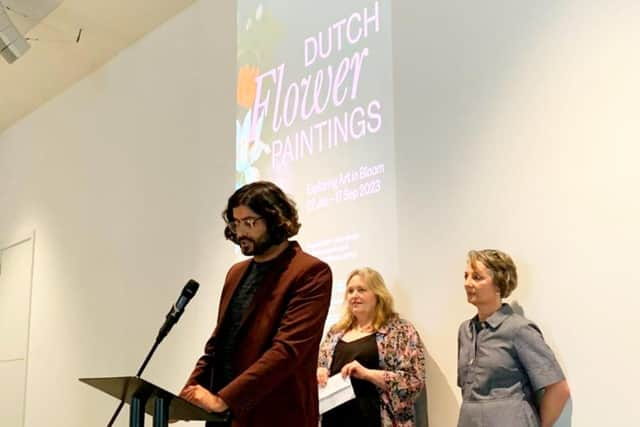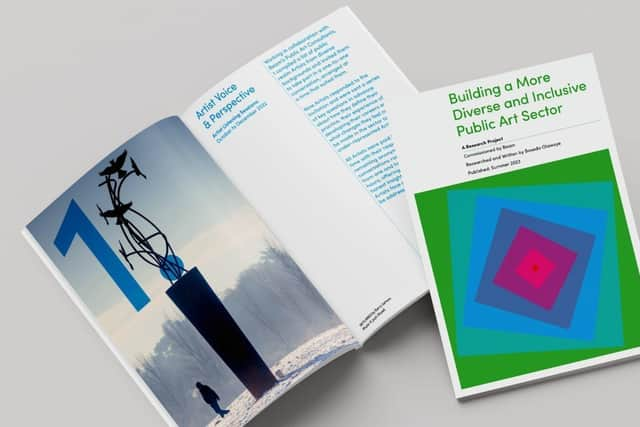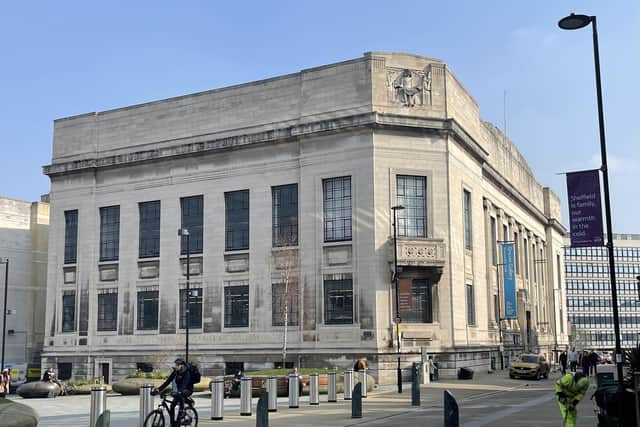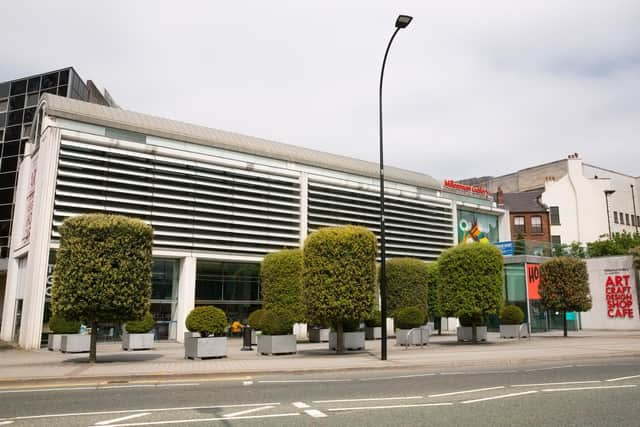Diversity must be key to Sheffield’s thriving culture sector, say Labour councillors
and live on Freeview channel 276
They have backed a new report from Beam, a northern-based cultural development organisation, which looks at how to increase diversity in the arts and culture sector. Nottingham-based independent creative engagement manager and consultant Boseda Olawoye researched and wrote the report, called Building a More Diverse and Inclusive Public Art Sector.
It explores the barriers that under-represented artists are facing and how the sector can be made fairer and more equitable, including looking to what support and training is needed, targeting and supporting artists to take on commissions for public art and involving members of the public earlier in the process of making art that will be seen in public places.
Advertisement
Hide AdAdvertisement
Hide AdIt also recommends supporting career development for early career artists from working-class backgrounds, including through paid mentoring opportunities.


Recent research found that the arts industry was among Sheffield’s fastest-growing sectors, expanding 6.99% between 2018 and 2022.
Last September the council adopted an interim culture strategy devised by the Sheffield Culture Collective. The economic development and skills policy committee is currently developing a long-term Culture Strategy with support from the Arts Council.
Investment
Developing a new culture strategy is being seen by key city institutions as proof that Sheffield is serious about attracting private sector funding to the city.


Councillor Minesh Parekh, Labour’s lead for economic development, culture and skills, said: “A lot of focus is on how we’ll bring more investment into the city which is right.
“We’ve received less funding from the Arts Council in recent and less recent years. That’s something we’re very keen to change – they’re very keen on us developing a new culture strategy and working with us.
Advertisement
Hide AdAdvertisement
Hide Ad“As much as bringing even more funding to the city is important, it’s also about the type of culture strategy we want to build.”
He said that the council must ensure that the culture sector is more representative of the whole city, rather than focused on the white middle class who are traditionally seen as being engaged with the arts.


“With a city as diverse as Sheffield and the Race Equality Commission last year, we’re very keen for artists of colour and working-class artists to come more to the fore,” said Coun Parekh. He said that aim was also stressed by the Arts Council.
Fantastic
One of the Race Equality Commission report’s seven key areas was “celebrating Sheffield through sport and culture: past, present and future”. One of its recommendations involved recognising the role of the city’s black, Asian and and minoritised ethnic communities in Sheffield’s culture and history.
Advertisement
Hide AdAdvertisement
Hide AdCoun Parekh said that the council also has a role as a commissioner of art in the public realm in taking the Beam Report recommendations into account.


He pointed to Gut Level, a DIY music community based in Eyre Street, Sheffield that focuses on LGBTQ+ people that recently had a residency in the prestigious Barbican Centre in the City of London.
Coun Parekh said that he had been speaking to them and other independent artists about how to create a level playing field for them on applying for and taking on public art commissions in Sheffield.
He said that the Graves and Millennium galleries bring a lot of art from outside Sheffield into the city. He recently spoke at the launch of an exhibition of Dutch flower paintings from the National Gallery at the Millennium.
Advertisement
Hide AdAdvertisement
Hide Ad“They’re doing a fantastic job of bringing in external art from high-quality collections but I think it’s good to treat culture in the round, both exhibiting great works of art of the past but also looking to cement Sheffield’s place in the future.
Future
“It’s a recognition that fed into devising the culture strategy from the start. The council is not the biggest factor by any means but we do have a key role in the sector’s direction and in everything we do where we empower the fantastic galleries and cultural organisations and DIY artists in the city.
“We also need to make sure we have a strategy that signals to the Arts Council and other key funders that we are serious about this, which we are.
“We see the arts as key to Sheffield’s future. It defines what we are as a city to have places that people can visit during the day and at the weekend that we have a strong recreational offer.
Advertisement
Hide AdAdvertisement
Hide Ad“Lots of people I know living in Sheffield think it is a lovely place to live because of the parks and outdoor spaces and the thriving cultural scene. It’s not just about the economic side but creating a way of life that is nice and is pleasant.”
He is also keen that Sheffielders don’t feel there is “high culture” in the city which is only for the privileged few and only “low culture” that is available to everyone else.
Coun Parekh talked of the work done by Sheffield Theatres, who run the Crucible and Lyceum and are consistently applauded as the best group of theatres in the UK outside London. “They do a lot of work in diversifying the shows they have and making them as affordable as possible.
Accessible
“The art galleries are free. They are displays which are about Sheffield for the whole of Sheffield. Kelham Island Museum is about our working-class heritage as a city.”
He said that Victorian philanthropist John Ruskin, whose collection is housed in the Ruskin Gallery in the Millennium Gallery, set up his museum in the city specifically so that working-class people could enjoy art.
“I think we should be looking to display the artwork of the Graves gallery, which belongs to the people of Sheffield, and make it accessible across the city for everyone in the city, not just those perceived to be interested in culture.
Advertisement
Hide AdAdvertisement
Hide Ad“We want to see the arts sector truly representative of the city. All the arts organisations want to see that as well, dispelling myths so that everyone sees that as a space for them too.”
He said that the arts sector has to go to where people are, not just have spaces that they expect people to go to.
He said that the South Yorkshire Mayoral Combined Authority sees the sector as a priority for the whole region as well.
“They want to see a thriving creative sector that delivers high pay, high value jobs for people in South Yorkshire. That has to be an ambition for us as well.